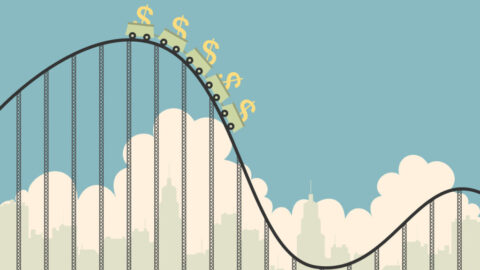Cash Trap
Money market considerations beyond the 4% yield.
By Allison Schmidt, Financial Advisor, CFP®, CPA
I was having drinks with some friends a couple nights ago, and money market returns came up (Yes, we’re a wild bunch). The comment was around how nice it was that money markets are finally paying “something”. What a welcomed positive change. These accounts are paying as high as about 4%*. We haven’t seen yields like that for over a decade. That is great news to be sure, but is it the safe haven for investments that we’ve been looking for?
We would argue that it’s not. Now, we’re just talking long-term investments here. There is no question that cash is important. Pure cash and money market cash are important to hold for your day to day lives, short-term expenses, trips, down-payments, etc. But in my recent conversations, I’ve noticed that this shiny, new, 4% rate is tempting some investors to allocate more than just cash positions. Investors are tempted to pull stock or bond investments from portfolios and allocate more heavily to cash. You can see this play out in this year’s first quarter money flow, which showed $45B flow out of stocks (equities) and $439B flow into money market mutual funds and ETFs. Money Market funds hit new all-time highs in March of $5.1 trillion (3/22/23)**.
I certainly understand the temptation. Let’s be honest, stock and bond investors weren’t exactly rewarded last year. In 2022, we saw the S&P 500 post its first double digit negative annual return since 2008 at -19%**. To exacerbate the situation, we also had the first year of negative bond returns in 9 years at -13%**.
2022 was a historic year for bonds and not in a good way. That return of -13% is more than 4 times worse than we’ve ever seen in terms of a bond market return, with the runner up being -2.92% in 1994**. That’s tough with an asset class that is supposed to be a safe haven for conservative investors. These returns have left investors feeling a bit beat-up, so when you see a low risk return of 4%, I see the appeal.
But before ditching your investment portfolios for a “nice consistent return”, consider these items first.
• Inflation: With inflation right at 5%^, a 4% return means you’re still losing spending power. Long-term investments need to exceed inflation over time in order to allow for increases in spending in the future, think retirement. As goods & services get more expensive, investments and therefore retirement income must increase as well. There are certainly short-term timeframes where investments do not keep up (2022); however, over time, stock investments consistently out-pace inflation on a meaningful level, with the average 30 year inflation rate tracking at about 2.23% and the average 30 year S&P 500 annual return at 9.89% per year**.
• Emotion: Last year was rough. It can be tempting to look at recent returns to make future investment decisions; however, in terms of stock investing, that rarely ends up being the best decision. A quick look to history: We have had 19 negative annual market returns since 1950 and 84% of the time the market was positive the next year and most of those positive returns came in double digits. According to ycharts, the average annual return after a negative year in the S&P 500 is +14.87%. It would take almost 4 years of a 4% money market return to experience that amount of growth.
• Potential for declining rates: Money market accounts have variable interest rates that can fluctuate daily. That aspect of these accounts has been very appealing in a rapidly rising rate environment. After all, this is the precise issue that plagued long-term bonds in 2022. Long-term bonds have a fixed rate for a set period of time, so the bonds couldn’t keep up with the rapid increase in rates. However, it’s important to think about what happens to money market rates when rates move in the other direction. Money Market yields will continue to keep pace and have the potential to decline just as quickly as they rose. So, in this rate environment, if safer investments should play a larger role in your portfolio, it may make sense to look at an income investment that locks in the rate for a longer period of time.
I’ll be the first to say that money market yields right around 4% are a welcomed change and a huge benefit for short-term cash needs and more conservative investors. The take away here is two-fold. First, check what you’re making on your cash at the bank or in your investment accounts to make sure cash is keeping up. Second, don’t be distracted by the new yield on cash– stay prudent when considering your long-term investment portfolios. All market environments present opportunities, if you pay attention. From the perspective of a high-quality stock portfolio,, an indicator of the next bull market is being in the middle of a bear market, which is where we sit today. Historically, it’s just been a matter of time.
*Ally Bank 4.28.23
**ycharts.com; SPX, BBUSATR
The opinions voiced in this material are for general information only and are not intended to provide specific advice or recommendations for any individual. All performance referenced is historical and is no guarantee of future results. All indices are unmanaged and may not be invested into directly.










